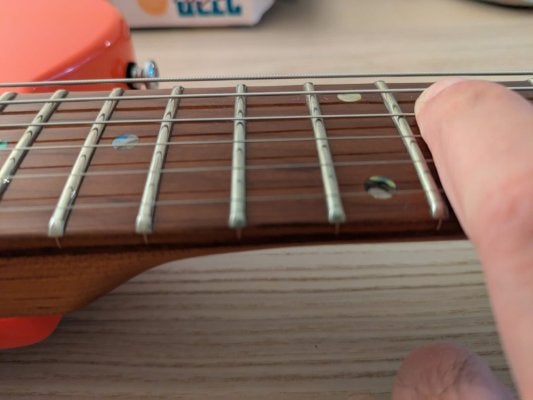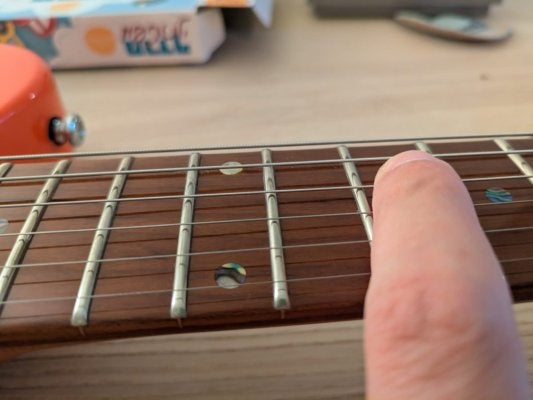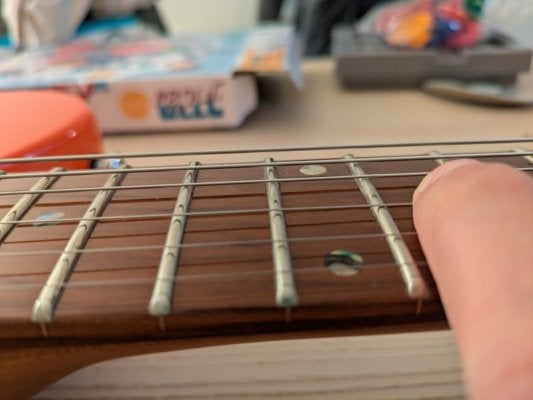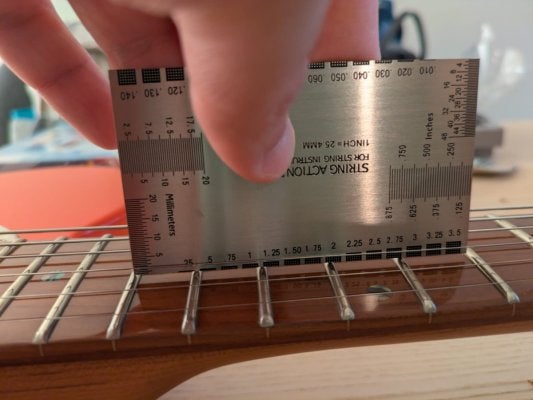I just got a new guitar and noticed it was choking on some bends. Before filing the high spots, I tried lightly tapping the problem frets with a small hammer to seat them better — but it didn’t lower the high fret enough.
By mistake, I tapped the same fret again, but this time on the lower strings side — an area that wasn’t high — which caused that side to sit too low. To compensate, I tapped the next fret in the same area. That moved the problem one fret higher, but when I tried the same approach again, it didn’t work. Now I’ve ended up with a badly choking note because one fret is too low.
Aside from doing a full fret level, what are my options for fixing this?
Would it make sense to file down the problematic area on the next frets (mainly around the G/D strings) and then use a crowning file to reshape them?
Thanks!
By mistake, I tapped the same fret again, but this time on the lower strings side — an area that wasn’t high — which caused that side to sit too low. To compensate, I tapped the next fret in the same area. That moved the problem one fret higher, but when I tried the same approach again, it didn’t work. Now I’ve ended up with a badly choking note because one fret is too low.
Aside from doing a full fret level, what are my options for fixing this?
Would it make sense to file down the problematic area on the next frets (mainly around the G/D strings) and then use a crowning file to reshape them?
Thanks!









